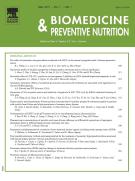Osteoclasts from peripheral blood mononuclear cells culture of ankylosing spondylitis subjects are resistant to apoptosis - 14/08/13
 , Letizia Penolazzi b
, Letizia Penolazzi b  , Martina di Ciano b
, Martina di Ciano b  , Elisabetta Lambertini b
, Elisabetta Lambertini b  , Giovanni Ciancio c
, Giovanni Ciancio c  , Carlo Orzincolo d
, Carlo Orzincolo d  , Francesco Trotta c
, Francesco Trotta c  , Marcello Govoni c
, Marcello Govoni c  , Roberta Piva b, ⁎
, Roberta Piva b, ⁎ 
Abstract |
The pathogenesis of ankylosing spondylitis (AS) is mainly characterized by inflammation in the axial skeleton initially dominated by mononuclear cell infiltrates and by increased number of osteoclasts (OCs) combined by an enhanced osteoblast activity leading to excessive bone apposition. The complexity of AS pathogenetic pathways has so far prevented the development of an adequate definitive therapy. Among the most studied targets for assessing therapeutic effectiveness, there are the OCs, the primary bone resorbing cells. Here, we investigated spontaneous and induced osteoclastogenesis in peripheral blood mononuclear cells (PBMCs) from AS patients, in order to explore the relation between osteoclastogenesis and disease activity. In addition, we tested the susceptibility of OCs from AS patients to undergo apoptosis investigating their response to Emblica officinalis plant extracts, previously characterized by us as apoptotic inducer in OCs. We found that PBMCs from AS are more susceptible to spontaneous osteoclastogenesis than the PBMCs from control samples, and that the osteoclastogenic potential was significantly associated with high ASDAS among AS patients with bone marrow edema. In addition, after treatment with E. officinalis extracts, normal OCs underwent apoptosis, but OCs from AS patients showed a strong resistance to apoptotic stimulus. We found that OCs from AS patients, unlike OCs from healthy individuals, express high levels of survival signals including Bcl-XL and Survivin, but do not express Bim proapoptotic protein. Our data demonstrate that AS OCs present qualitative peculiarity: this may help in identifying an effective strategy to prevent bone changes in AS before structural modifications have occurred.
Le texte complet de cet article est disponible en PDF.Keywords : Ankylosing spondylitis, Osteoclasts, Apoptosis
Plan
Vol 3 - N° 3
P. 253-259 - juillet 2013 Retour au numéroBienvenue sur EM-consulte, la référence des professionnels de santé.
L’accès au texte intégral de cet article nécessite un abonnement.
Déjà abonné à cette revue ?

